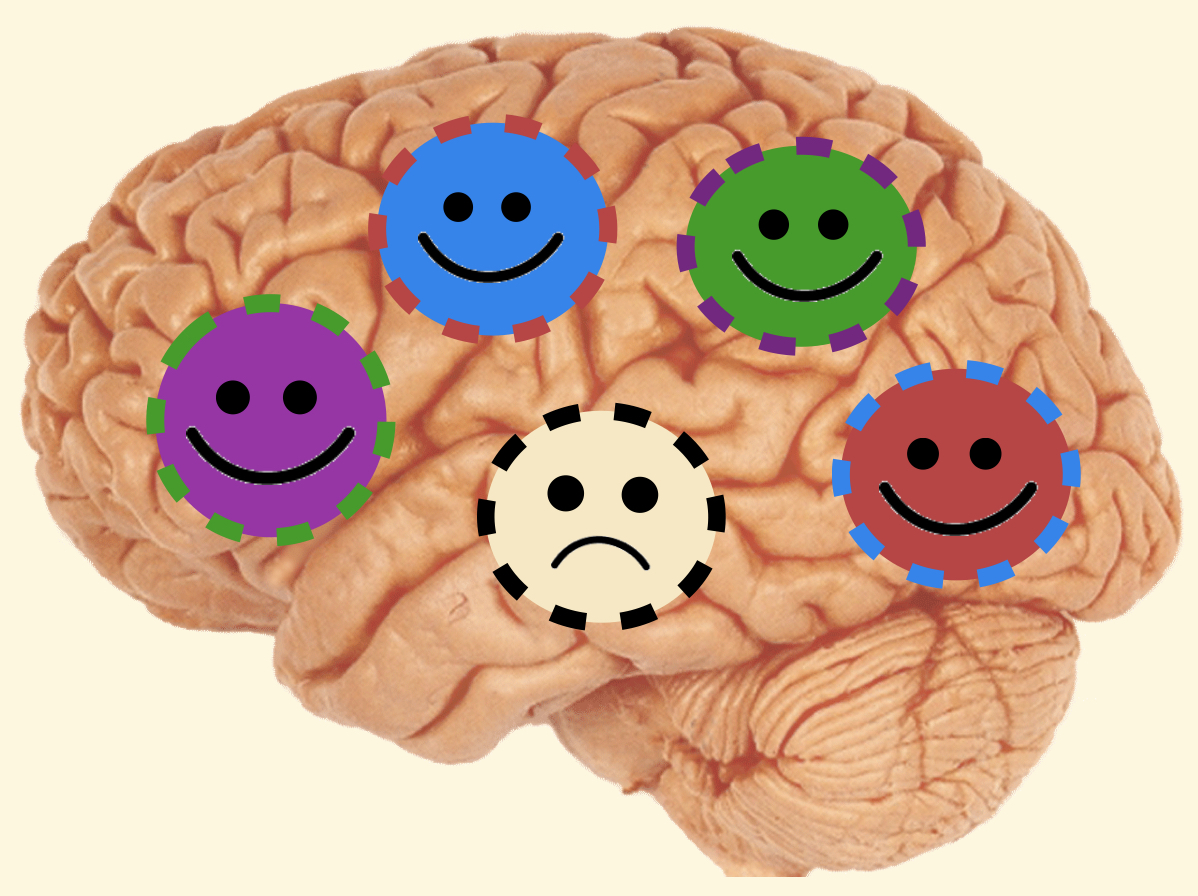
I am a travel addict.
I say “addict” in the usual sense:
1. I use travel to feel good.
2. The good feeling starts as soon as I start planning a trip
3. My habit started at a bad time in my adolescence.
We all have feel-good habits because our brain is designed to seek rewards. Our ancestors had to seek in order to eat, so we’ve inherited a brain that keeps looking for something good.
Each brain defines that “something good” from its own past experience because good feelings pave neural pathways that help you find more of the same. We all end up with some quirky pathways!
I can pinpoint the experiences that wired in my travel addiction. You can probably figure out how your self-soothing habits got started. Some habits are less harmful than others, but they have a lot in common. They trigger your happy brain chemicals: dopamine, serotonin, and oxytocin.
Here’s how my happy chemicals are stimulated by my habit. It may help you figure out how your happy chemicals are stimulated by your happy habit.
Dopamine makes you feel great when you expect a reward. But our brain habituates to the rewards it has, so it takes new and improved to trigger dopamine. Variety stimulates it because variety helped our ancestors survive.
Dopamine rewarded our ancestors for finding fruit when they had enough meat and finding meat when they had enough fruit. Travel brings variety into your life, and your brain rewards you with dopamine.
Oxytocin is the good feeling of social trust. Our brain makes careful decisions about when to release it because trusting everyone would not promote survival. In daily life, it’s hard to find new trust, because old experience tells your brain when to release it.
When you travel, you tend to trust in new ways, because there’s no routine guiding your responses. You may tell your life story to a stranger on a plane, or chat with strangers in shops and restaurants. Your brain rewards you with oxytocin when you find moments of trust, despite the inevitable risks.
Serotonin rewards a mammal for asserting itself effectively because that promotes survival. In daily life, we must manage this natural urge for dominance to get along with family, friends, and co-workers. On vacation, you can feel like a king. You hate to admit that you want this feeling, but the brain built by natural selection rewards you with serotonin when you have a moment of social dominance.

Travel can relieve stress chemicals too. Cortisol is the chemical that makes you feel like your survival is threatened, though you don’t consciously think this. Neurons connect when cortisol flows, so whatever triggered it in your past built a pathway that triggers you quickly today.
Travel takes you away from your usual triggers. It can help you escape the loop of looking for threat signals and releasing more cortisol.
How I Got Addicted to Travel
I could come up with sophisticated reasons for my love of travel, but they would be fake. The truth is that neurons connect when happy chemicals flow, so we get wired to expect good feelings from whatever triggered them before. Random experiences created my habit, and they created yours.
When I was 10 years old, free trips fell into my father’s lap, thanks to a sales incentive program. My parents were people who rarely left home, so imagine my surprise when they started returning from Europe and Asia with exciting tales to tell. Dopamine!
When I was 14, my father’s long-lost cousin from Italy showed up for a visit. There was no common language among us except my two years of French. I became the family translator, and it brought me more serotonin than I’d ever gotten.
When I was 15, my peers started going to Europe. I longed to go because my French textbooks made Paris seem like the happiest place on earth. My parents could not afford a “teen tour,” but my father got a trip to Spain and brought me along!
My joy soon turned to sorrow, because these sales incentive trips leave you inside the hotel for schmoozing much of the time. It was agony for me to be in Europe but stuck inside. I raised my fist to the sky and said, “I will get back here, and I will never be stuck inside again.”
When I was 16, I found a $1,000 summer program in Europe, and a $2-an-hour part-time job. With 500 hours of work, I would have it, and I was thrilled to get out of the house for 500 hours. I found the oxytocin at work that I couldn’t find elsewhere.

My trek through Europe was a fabulous experience, but I should tell you the rest of the story. I had never learned to connect with my peers, so focusing on the trip was a way to avoid that problem. While other kids were planning proms and graduation parties, I was planning my itinerary and building my nest egg.
I used travel to avoid my feelings, just like any addict. Seeing the full story helped free me from the addiction and focus on building much-needed skills. I still love travel, but I don’t use it to run away from uncomfortable feelings. (Well, sometimes I do, but at least I know it when I’m doing that.) You can build new skills and master uncomfortable feelings by looking at the roots of your self-soothing habits.
My husband has an interesting self-soothing habit: He collects music in a specific niche. I can see how his habit got started and how it stimulates his happy chemicals. He doesn’t especially want to hear this. He thinks he just likes music. He has sophisticated reasons. It’s hard to see yourself as a collection of accidental pathways to your happy chemicals. But when you do, you build your power to blaze new trails in your brain instead of sticking to your old roads.
Lots more on this in my book, Habits of a Happy Brain: Retrain your brain to boost your serotonin, dopamine, oxytocin, and endorphin levels.

